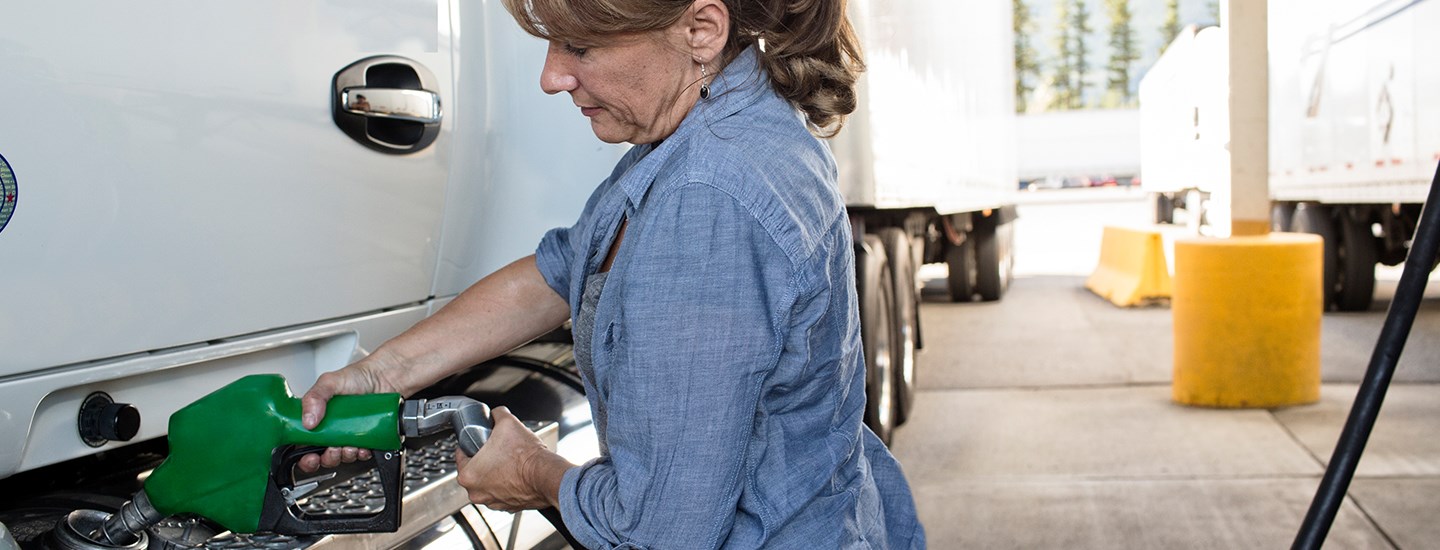July 16, 2021

Five Things to Consider When Building a Fuel Management Program
Aaron Decker, Managing Director - Multi Service Fuel Card
Putting a fuel management program in place can save you money and help your business grow.
One of the leading operational expenses of a business that operates fleet vehicles is purchasing fuel. Fuel prices vary widely depending on where your fleet operates and the type of fuel that your fleet consumes. Fleet managers are constantly looking for ways to optimize fuel spend as they realize shaving a penny or two per gallon can offer the business tremendous savings quarter to quarter. Here are five things to consider when thinking about a quality fuel management program.
- If you don’t have a fuel management program in place…create one!
While it might seem like a no brainer to some, there are many fleets that operate in today’s market with a wild west mentality when it comes to purchasing fuel. Whether that’s propelled by keeping drivers happy or just not having the time to pay attention to fuel spend, there are millions of gallons of fuel purchased every day by fleets that operate with no set fuel management policy in place. Taking the time to develop a fuel purchasing program that works best for your business can often lead to a dramatic reduction in operational overhead. Purchase policies built out through a B2B fleet fuel card are easy to craft and can help prevent unwanted spend that accompanies drivers with open loop credit cards or worse…cash.
- Have Your Drivers Sign a Fuel Program Contract
The phrase “I can’t control where my drivers fuel” is one that’s repeated often by fleet managers across North America. Taking this position, however, can lead to wasteful spend and eliminate any potential savings that might be realized. There’s no point in creating a fuel management program if your drivers don’t adhere to it. Once you’ve built out the program that’s right for your business, make sure to train your drivers on all the elements of it and then have them sign a contract stating they agree to follow the fuel management policy. The contract simply states that they’re aware of the fuel program parameters and will adhere to it. It’s also a good idea to invest in a reward mechanism for desired fueling behavior. If the drivers are going to save the business a great deal of money, make sure to invest a bit of that return to say thank you to the drivers that make it possible!
- Leverage Your Buying Power
A good way to save money purchasing fuel is to concentrate purchasing power and use that concentration to secure fuel discounts at truck stops or gas stations that want your gallons. Fuel retailers are generally willing to commit to fuel discounts if the fleet agrees to a gallon commitment. Most fuel card providers are equipped with the ability to honor discounts that your fleet might secure in exchange for a gallon commitment. It’s important to think about what type of discount is being administered. If your fleet operates in an area that features a strong rack-to-retail spread, you might consider opting for a “Cost Plus” discount (if offered) that allows your fleet to take advantage of favorable discount positions. In some parts of the U.S., this can be as much as .50 to .60 cents per gallon! If the rack-to-retail spread isn’t as robust in the area you operate, a retail minus discount might be best as this fixed “per gallon” discount doesn’t vary like cost plus discounts do. When thinking about fuel discounts, leverage your fuel card provider for insight around your operational footprint and use them as a consultant. Every penny helps!

- Pay Attention To Fuel Invoices
There is no point in building a fuel management program if you’re not paying attention to spend. Taking the time to analyze fuel invoices can help in a myriad of ways. Invoices that contain tens, hundreds or thousands of transactions are good places for a driver to hide a fill up for their personal vehicle, for miscellaneous billing card transaction fees to be tweaked or enhanced, or for out-of-policy fueling to occur. It’s also not a bad idea to reconcile fuel receipts with invoice data to see if what was shown as being paid at the pump matches up with invoice data. There are instances where the fine print contained in fuel card terms and conditions allows a billing card company to add cents to a gallon of fuel to obtain a minimum margin. Another scenario is making sure fuel discounts agreed to by merchants are applied properly. Paying attention to fuel invoices is vital to managing spend.
- Conduct Quarterly Fuel Program Reviews
A proper fuel management program should be continually tweaked and evaluated. Many fleet managers get complacent over time, taking a “set it and forget it” mentality. Taking the time to look for ways to enhance or harmonize fuel spend will ensure your program is running in tip top shape. Have the needs of your fleet changed? Have market conditions changed? Do you have the line of credit you need? Are drivers fueling according to policy? Can you obtain a better discount with a gallon shift strategy? Are your fraud prevention controls up to date? Reviewing your fuel program is vital to ensuring it’s operating the way you need it to.
Operating a successful fuel management program isn’t overly difficult, but it does take oversight and engagement by fleet managers. Using a quality B2B fuel card, like the PacLease PacFuel card, is a step in the right direction. It can do a lot of the heavy lifting of building your fuel management program with built in purchase controls, transaction monitoring, and the ability to facilitate merchant discounts. It also can connect interested fleets with consultants that can help identify elements of a fuel management program that will help your fleet grow.
To learn more about PacFuel and how it can help your fleet with fuel management visit https://paclease.com/customized-solutions/pacfuel/
More information about PacLease Customized Solutions can be found at https://paclease.com/customized-solutions/
For more great blogs, visit PacLease Blogs
